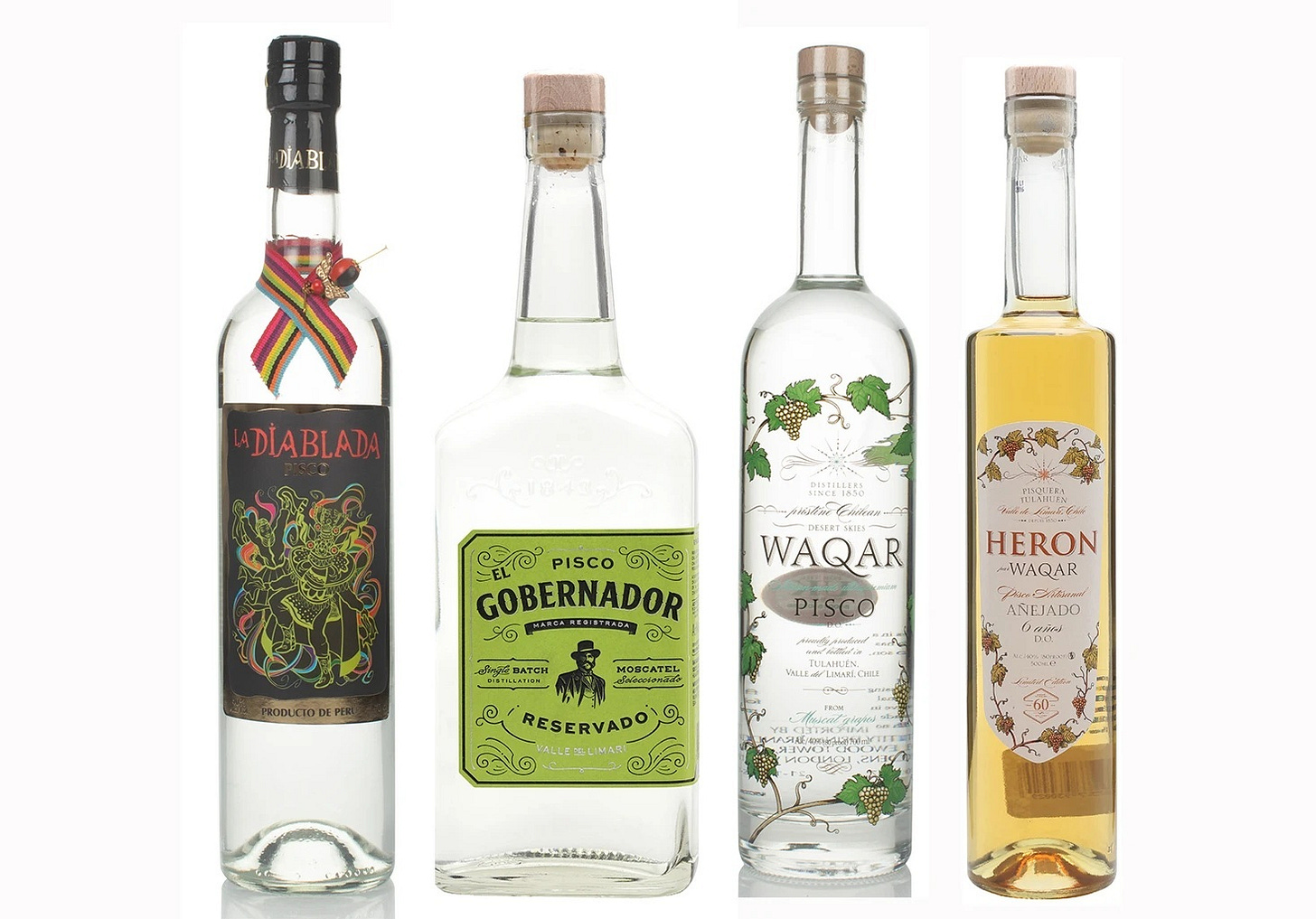
by lspeed | Jul 27, 2025 | LIQUORS: LIFT YOUR SPIRITS
Gin is the most permissive of the major spirits. As long as juniper is present, nearly any botanical, herb, or aromatic is fair game. This encouraged experimentation across the globe, from fine dining chefs to rural distillers, each interpreting gin through the lens of their local flora or their at times excentric imagination. What once meant citrus and coriander now includes everything from ants and caviar to durian and yerba mate. Here’s a tour of ten gins that challenge conventions and expand the idea of what gin can be. Some are provocative, most genuinely surprise, but all are real:
1. Phở Gin – Peter Cuong Franklin, Vietnam
Chef Peter Cuong Franklin, best known for Anan Saigon, collaborated with Lady Trieu Gin to produce a spirit inspired by pho, Vietnam’s national dish. The gin uses traditional pho aromatics such as star anise, cinnamon, coriander seed, cardamom, lime leaf, and galangal. While no animal products are included, the effect is eerily reminiscent of a pho broth’s spice-laden steam. It’s a culinary translation rather than a gimmick, and the gin is used in cocktails designed to echo Vietnamese flavor profiles. The idea works because the core spices already share common ground with traditional gin botanicals.
Website: https://www.ladytrieugin.com
2. Ant Gin – Cambridge Distillery, UK
Perhaps the most eyebrow-raising gin on the list, Cambridge Distillery’s Ant Gin contains actual red wood ants. These aren’t tossed in for shock value—they’re distilled to extract formic acid, which adds a sharp, citrus-like acidity. The ants function much like a botanical, delivering a dry, tangy finish that balances out other aromatics like lemongrass and juniper. While it’s not something you’ll see in high-volume bars, it has been used in molecular gastronomy settings and curated cocktail lists.
Website: https://www.cambridgedistillery.co.uk
3. Seaweed & Caviar Gin – Portofino Dry Gin, Italy
This limited-edition gin from Italy’s Ligurian coast includes seaweed and sturgeon caviar in its botanical mix. It’s not a seafood-flavored spirit, but it does carry a mineral-rich, saline edge, designed to evoke the maritime environment around Portofino. The caviar is vacuum distilled to prevent oxidation, while the seaweed adds umami without overwhelming the gin’s herbal backbone. It’s a rare example of a gin that leans into luxury ingredients without resorting to excessive flavoring.
Website: https://portofinogin.com
4. Blue Pea Flower & Durian Gin – Singapore Distillery, Singapore
This gin combines two highly distinctive ingredients: butterfly pea flower, which gives the gin a vibrant blue hue that turns purple with acid, and durian, the infamously pungent Southeast Asian fruit. The durian is distilled, not infused, toning down its harshest notes while retaining its funky character. It’s an acquired taste, but one that makes sense in the Southeast Asian context. The color change adds visual drama, while the durian flavor appeals to regional palates more than global ones.
Website: https://singaporedistillery.com
5. Monkey 47 Distiller’s Cut – Germany
Each year, Germany’s Monkey 47 releases a limited Distiller’s Cut featuring an unusual or rare botanical added to their already complex 47-botanical base. Highlights include wood ants (2018), purple shamrock (2020), and scarlet monarda (2022). These annual experiments reflect serious botanical research. The wood ant edition mirrors the approach of Cambridge’s Ant Gin, delivering natural acidity via insect-derived formic acid. These bottles are collectible, and the profiles change dramatically each year.
Website: https://www.monkey47.com
6. Peddlers Salted Plum Gin – China
Shanghai-based Peddlers Gin Co. released this limited edition inspired by suanmei (酸梅), or salted preserved plum—a traditional Chinese snack and herbal drink ingredient. The gin includes salted plums, goji berries, orange peel, and Peddlers’ base blend of Chinese botanicals. It’s sweet-sour and herbal, landing somewhere between aperitif and traditional gin. The flavor is culturally specific, and it’s positioned more as a local expression than a crowd-pleasing export.
Website: https://peddlersgin.com
7. Principe de los Apóstoles Mate Gin – Argentina
Crafted by bartender Tato Giovannoni, this Argentine gin puts yerba mate—a bitter herbal tea central to Argentine culture—at its center. Other botanicals include pink grapefruit peel, peppermint, eucalyptus, and juniper. This gin is both a cultural tribute and a clever use of a widely consumed but rarely distilled ingredient. The yerba mate gives it a dry, grassy backbone that distinguishes it from sweeter New World gins. It mixes well with tonic but also stands up in herbal cocktails.
Website: https://www.apostolesgin.com
8. Inverroche Amber Gin – South Africa
South Africa’s Inverroche distillery uses fynbos, a biodiverse group of indigenous plants found only in the Cape Floral Kingdom. The Amber Gin uses dried coastal fynbos botanicals that bring earthy, resinous, and lightly smoky characteristics to the gin. The color comes naturally from the botanicals, not additives. The flavor profile veers closer to spiced tea than citrus-forward gin, and it pairs well with orange peel garnishes or rooibos mixers.
Website: https://www.inverroche.com
9. Procera Gin – Kenya
Procera Gin, distilled in Nairobi, is made with juniperus procera, a species of juniper native to sub-Saharan Africa. The base spirit is also made from local sugarcane, and other botanicals include baobab, Swahili coastal herbs, and pink pepper. The result is earthy and spicy, with a distinct savory finish. Bottled in hand-blown glass and corked with East African wood, it’s aimed at the high end of the gin market, but its real value lies in being one of the few truly African terroir gins.
Website: https://www.proceragin.com
10. Bayab African Gin – South Africa
Bayab incorporates baobab fruit, African grains of paradise, and a mix of familiar gin botanicals. The baobab adds citrusy acidity and tartness, while the grains of paradise offer heat and spice. While it’s more accessible than some others on this list, it’s still notable for its clear African identity and use of lesser-known native ingredients. It reflects a trend toward locally rooted gin brands in the southern hemisphere.
Website: https://www.bayabgin.com
This line-up represents a global pivot toward spirits as storytelling tools. Most will not suit every palate, and some are “easier to admire than to drink”. But they are evidence that the gin renaissance isn’t slowing down. If anything, it’s getting weirder.
Image Credit: https://commons.wikimedia.org/w/index.php?curid=110314526
_ _ _
© CHURRASCO PHUKET STEAKHOUSE / ALL RIGHTS RESERVED
Reprinting, reposting & sharing allowed, in exchange for a backlink and credits
Churrasco Phuket Steakhouse serves affordable Wagyu and Black Angus steaks and burgers. We are open daily from 12noon to 11pm at Jungceylon Shopping Center in Patong / Phuket.
We are family-friendly and offer free parking and Wi-Fi for guests. See our menus, reserve your table, find our location, and check all guest reviews here:
https://ChurrascoPhuket.com/
#Churrascophuket #jungceylon #phuketsteakhouse #affordablewagyu #wagyu
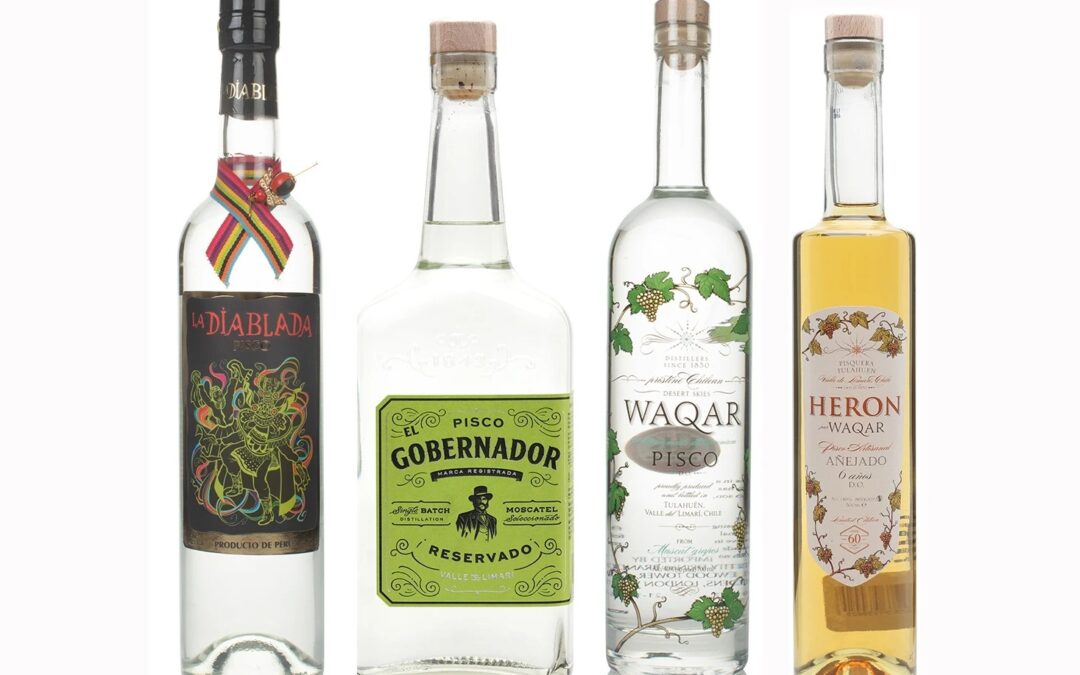
by lspeed | Jul 13, 2025 | LIQUORS: LIFT YOUR SPIRITS
Pisco is a bold grape brandy that has long captured the hearts of South Americans. With a rich colonial history, a longstanding rivalry between two countries over its origins, and it’s starring role in cocktails like the Pisco Sour, this versatile spirit offers far more than just a kick.
Origins and History
Pisco traces its roots back to the 16th century, shortly after Spanish conquistadors introduced viticulture to South America. Seeking to replicate the wines of Spain, settlers planted European grape varietals across Peru and Chile. When surplus grapes emerged, distillation became a logical next step. By the early 1600s, winemakers in Peru’s Ica Valley began producing a clear, unaged grape brandy they called pisco—named after the port of Pisco, from which it was shipped.
The spirit quickly grew in popularity throughout the Spanish Empire. Its relatively high alcohol content and unique flavor made it a hit among both colonists and sailors. By the 18th century, pisco was already a staple in taverns from Lima to California.
The Peru–Chile Debate
Both Peru and Chile claim pisco as their national spirit, leading to a spirited (and ongoing) dispute. Peru insists on exclusive historical rights, pointing to the earliest records of production and the town of Pisco itself. Chile, on the other hand, produces a greater volume and has developed its own distinct styles and appellations.
This rivalry extends to trade agreements, branding, and even international festivals. In many global markets, Peruvian and Chilean piscos are now legally distinguished, much like how Champagne and Prosecco are labeled based on origin.
Ingredients and Production
Pisco is made by distilling fermented grape juice (essentially wine) into a clear brandy. However, its production is governed by strict rules—especially in Peru, where it is a matter of national pride.
Peruvian pisco must be:
-
Made from one or more of eight approved grape varietals (like Quebranta, Italia, or Torontel)
-
Distilled in copper stills without dilution (no added water)
-
Aged for a minimum of three months in inert containers (like stainless steel or glass)
Chilean pisco, while similar in spirit, allows more flexibility in production methods. It can be aged in wood and often has a different flavor profile due to local preferences and broader regulations.
Geographic Spread and Global Popularity
While pisco has long been a fixture in South American bars, its international reach expanded significantly in the 21st century. The cocktail renaissance in cities like New York, London, and Tokyo brought a renewed interest in artisanal and regional spirits. Mixologists embraced pisco for its versatility, floral notes, and historical depth.
Today, you can find bottles of both Peruvian and Chilean pisco on shelves in specialty liquor stores around the world. Export markets have grown steadily, with pisco bars popping up from San Francisco to Sydney.
Famous Cocktails Featuring Pisco
Pisco shines both sipped neat and in cocktails. Here are some of the most iconic drinks:
-
Pisco Sour – The signature cocktail of Peru (and unofficially, Chile too). It blends pisco, lime juice, simple syrup, egg white, and bitters for a tart, creamy, and aromatic drink.
-
Chilcano – A refreshing mix of pisco, ginger ale, lime, and bitters. Perfect for warm days and lighter drinking.
-
El Capitán – Often compared to a Manhattan, this cocktail uses pisco and sweet vermouth, offering a drier, fruitier twist on a classic.
-
Pisco Punch – A San Francisco-born favorite from the late 1800s, it combines pisco with pineapple, citrus, and sugar. Once wildly popular during the Gold Rush, it’s now making a quiet comeback.
Image Credit: https://www.olivemagazine.com/
_ _ _
© CHURRASCO PHUKET STEAKHOUSE / ALL RIGHTS RESERVED
Reprinting, reposting & sharing allowed, in exchange for a backlink and credits
Churrasco Phuket Steakhouse serves affordable Wagyu and Black Angus steaks and burgers. We are open daily from 12noon to 11pm at Jungceylon Shopping Center in Patong / Phuket.
We are family-friendly and offer free parking and Wi-Fi for guests. See our menus, reserve your table, find our location, and check all guest reviews here:
https://ChurrascoPhuket.com/
#Churrascophuket #jungceylon #phuketsteakhouse #affordablewagyu #wagyu
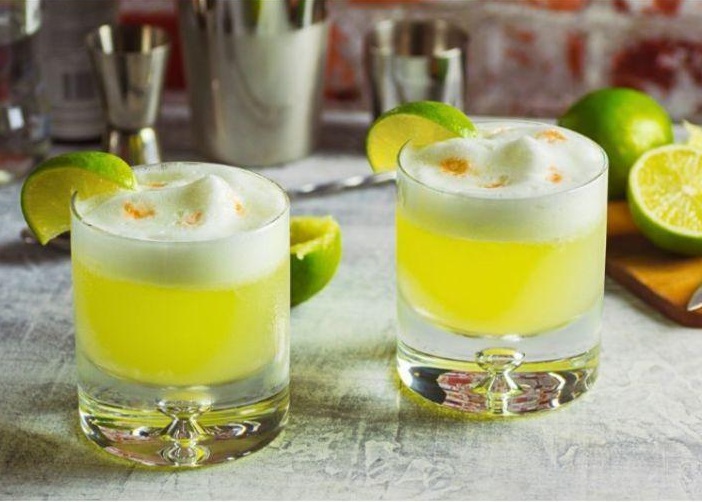
by lspeed | Jun 29, 2025 | LIQUORS: LIFT YOUR SPIRITS
That smooth, cloud-like foam on a classic Whiskey Sour or Gin Fizz has always been one of cocktail culture’s visual and textural signatures. Bartenders have relied on egg whites to create it, but today are moving away from it, not just for convenience, but for safety, consistency, and broader appeal.
Why Skip the Egg?
Raw egg whites do the job well, but they have drawbacks. The risk of salmonella, especially in warmer environments or when cold storage isn’t ideal, is a real concern. And from a service perspective, using eggs slows things down. There’s separation, potential spoilage, and clean-up to deal with. There’s also the matter of dietary restrictions. Egg whites aren’t vegan, and they’re off-limits for those with allergies or certain religious or ethical concerns. With customer preferences evolving, offering an inclusive drink list is no longer just a nice-to-have. It’s expected.
Modern Foaming Agents
In place of egg whites, bartenders are turning to purpose-made cocktail foamers. These are liquid or powdered products, designed to create a stable, long-lasting foam with little fuss. Just a few drops or a small scoop is enough to get that same creamy layer, minus the egg. Their appeal is easy to understand:
-
Shelf-Stable: No refrigeration needed, and most products last months once opened.
-
Safe and Clean: Less risk of contamination. No shells, no mess, no odors.
-
Vegan-Friendly: Works for nearly every guest, whether for health, ethical, or religious reasons.
-
Reliable: Eggs vary from one to the next, so modern foamers produce consistent results.
-
Faster Workflow: No separation or emulsification needed. Just shake and pour.
-
Presentation: The foam is tighter and more stable, often preferred for presentation, especially in high-volume service where drinks need to look sharp longer.
Brands Worth Knowing (Alphabetical)
-
Fee Foam – From the same company behind Fee Brothers bitters; easy to use and widely available.
-
Foamee – A liquid foamer known for producing dense, long-lasting foam.
-
Ms. Better’s Miraculous Foamer – A popular choice in craft bars, vegan and shelf-stable.
-
Versawhip – More common in the culinary world, but also used in bars for custom foams and emulsions.
-
Wonderfoam – A newer, plant-based product designed specifically for cocktail applications.
Swapping eggs for one of these doesn’t mean compromising. For bars, it’s a smart way to deliver better and safer drinks faster to more people.
Image Credit: https://www.diageobaracademy.com
_ _ _
© CHURRASCO PHUKET STEAKHOUSE / ALL RIGHTS RESERVED
Reprinting, reposting & sharing allowed, in exchange for a backlink and credits
Churrasco Phuket Steakhouse serves affordable Wagyu and Black Angus steaks and burgers. We are open daily from 12noon to 11pm at Jungceylon Shopping Center in Patong / Phuket.
We are family-friendly and offer free parking and Wi-Fi for guests. See our menus, reserve your table, find our location, and check all guest reviews here:
https://ChurrascoPhuket.com/
#Churrascophuket #jungceylon #phuketsteakhouse #affordablewagyu #wagyu
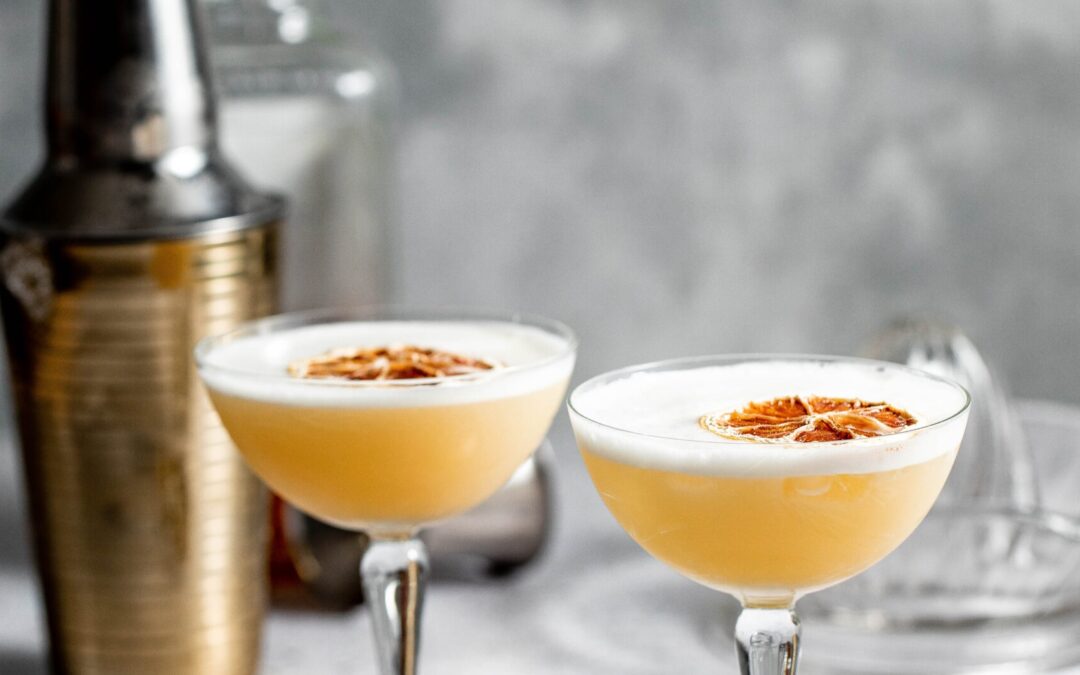
by lspeed | Jun 15, 2025 | LIQUORS: LIFT YOUR SPIRITS
The Whisky Sour is a classic expression of a “sour”, a cocktail category defined by a spirit, citrus juice, and a sweetener. The formula is ancient in concept, dating back to the days when sailors were given spirits mixed with lemon or lime to prevent scurvy and mask the rough flavors of ship-stored alcohol.
These eventually evolved into more refined versions as they moved onto land and into bars. The first printed mention of the Whisky Sour dates to 1862, in Jerry Thomas’s The Bartender’s Guide, widely considered the first cocktail book. But a letter in a Peruvian newspaper from 1870 credits Elliot Stubb, an English steward, with inventing the drink.
The Classic
At its core, a classic Whisky Sour recipe is simple:
Shake all ingredients vigorously with ice (and without, in the case of the “dry shake” method for egg white versions), then strain into a rocks glass over fresh ice. Garnish with a cherry or citrus. The result is bright and refreshing, with the whiskey providing warmth, the lemon a sharp tang, and the syrup smoothing it all out.
Global Variations
The cocktail has inspired countless riffs that reflect local spirits and flavor profiles:
-
New York Sour: A float of dry red wine atop the traditional version adds visual drama and tannic complexity.
-
Amaretto Sour: A popular 1970s twist using sweet Italian almond liqueur. Modern versions add bourbon and fresh citrus to give it structure and depth.
-
Pisco Sour: A staple in Peru and Chile made with pisco, lime juice, simple syrup, and egg white, finished with aromatic bitters.
-
Yuzu Sour: A Japanese riff that swaps lemon for fragrant, tart yuzu juice. It pairs especially well with Japanese whisky.
-
Penicillin Sour: Created in New York, this smoky take features blended Scotch, fresh lemon, honey-ginger syrup, and a float of peaty Islay whisky.
-
Maple Whisky Sour: A Canadian favorite, substituting maple syrup for sugar, paired with rye whisky.
-
Irish Sour: Made with Irish whiskey, this version is often softer and more honeyed in flavor. Some variations add a dash of bitters or use elderflower liqueur.
-
Smoked Sour: Popular in upscale bars, this version infuses smoke either through a smoked glass, smoked ice, or a smoky whisky like Laphroaig.
-
Tamarind Sour: Found in parts of Southeast Asia and Latin America, tamarind pulp replaces lemon juice for a tangy-sweet-sour profile. Works well with bourbon or even mezcal.
The Egg White Divide
The most debated element of the Whisky Sour is egg white. While it doesn’t significantly alter the flavor, it adds texture, richness, and a visually appealing foam. For some, it makes the drink. For others, it’s off-putting due to dietary preferences, allergies, or food safety concerns. While the risk of salmonella from fresh eggs is minimal, some bartenders now use pasteurized eggs or substitutes like aquafaba (chickpea brine) to mimic the same effect. Purists argue that the original 19th-century sour was egg-free, and that any frothy embellishment is a modern flourish.
Final Pour
The Whisky Sour is both a classic and a chameleon. It also is my personal favorite. But always make sure to ask: “with or without egg?”
Image Credit: https://passthesushi.com/whiskey-sour/
_ _ _
© CHURRASCO PHUKET STEAKHOUSE / ALL RIGHTS RESERVED
Reprinting, reposting & sharing allowed, in exchange for a backlink and credits
Churrasco Phuket Steakhouse serves affordable Wagyu and Black Angus steaks and burgers. We are open daily from 12noon to 11pm at Jungceylon Shopping Center in Patong / Phuket.
We are family-friendly and offer free parking and Wi-Fi for guests. See our menus, reserve your table, find our location, and check all guest reviews here:
https://ChurrascoPhuket.com/
#Churrascophuket #jungceylon #phuketsteakhouse #affordablewagyu #wagyu
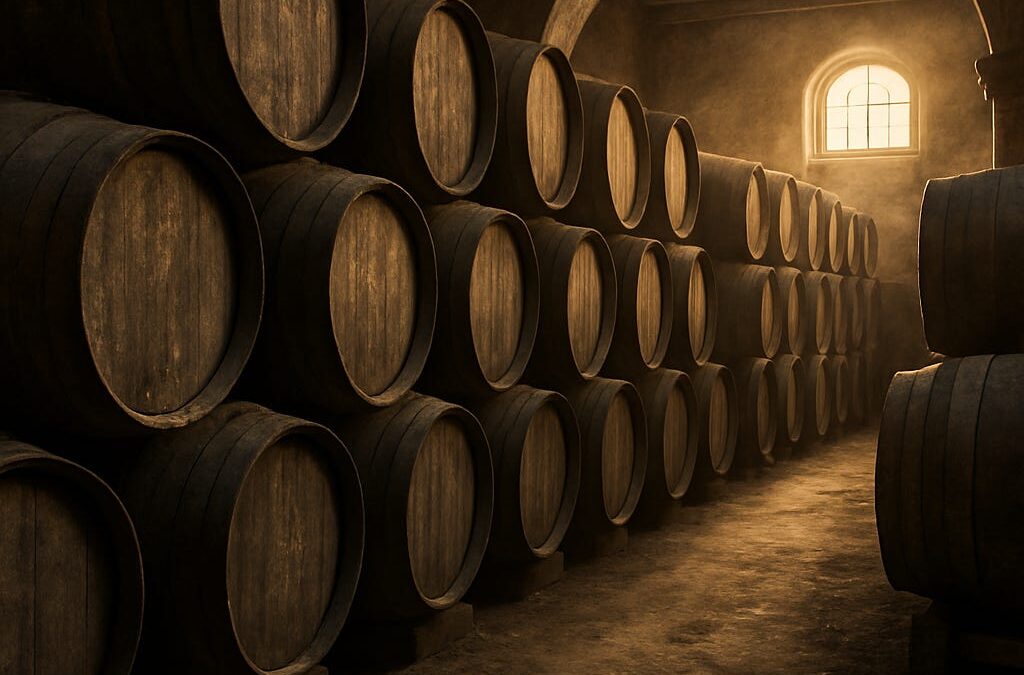
by Ross Kingsley | Jun 1, 2025 | LIQUORS: LIFT YOUR SPIRITS
For connoisseurs of sherry, rum, and lately whisky, the term “Solera” signals a method of aging that goes beyond the typical cask-year arithmetic. Instead of bottling from a single vintage, the Solera process involves a “Fractional Blending” system that maintains continuity, consistency, and complexity over time. It’s a technique that doesn’t just age a product, it cultivates a legacy.
Sherry Roots
The origins of the Solera system lie in southern Spain, in the triangle of Jerez de la Frontera, Sanlúcar de Barrameda, and El Puerto de Santa María. First developed in the 18th century, the method was devised to stabilize the taste and quality of sherry. Early wine merchants in the region realized that by continuously blending older and younger wines in a cascading sequence of barrels, they could create a product that was consistent, reliable and refined—no matter the harvest quality in any given year.
Though no single individual is credited with “inventing” the Solera system, it was refined over time by Spanish bodegas such as González Byass and Lustau, whose multi-tiered barrel systems—sometimes containing wine over 100 years old—still define the gold standard of the practice.
Colonial Legacy
The spread of the Solera technique parallels the reach of the Spanish and Portuguese colonial empires. As merchants and missionaries brought their drinking traditions across oceans, so too traveled the idea of fractional blending.
In Latin America and the Caribbean, distillers of rum began to experiment with the system. Venezuelan producer Santa Teresa and Guatemalan brand Ron Zacapa are two of the more prominent modern rum houses employing Solera aging. These producers embraced the method not just to mimic European practices, but to handle the challenges of tropical climates, where spirits mature more quickly and can become volatile if aged too long in static casks.
In Brazil, Solera principles influenced the production of aged cachaça, while in the Philippines, blends of aged and fresh rums took on a life of their own. Portuguese colonies such as Madeira also saw adaptations of Solera-style methods in their very own fortified wine production.
Whisky & More
Though the whisky industry historically works through age statements and single-barrel prestige, it was only a matter of time before Solera crept into the picture. The modern turning point came in the late 20th century, when Glenfiddich introduced its 15-Year-Old Solera Reserve, aged in a massive vat that is never fully emptied. The continuous top-up and fractional draw mirror the original Solera concept, but adapted for single malt Scotch. Glenfiddich’s aim was to achieve a “living” whisky—one that evolves subtly but never radically shifts from its signature profile.
Today, Solera-style systems are used by innovative distillers like Kavalan in Taiwan. And some Bourbon makers in the United States, such as Hillrock or Stranahan’s, are aiming for complexity through layered blending.
And finally, it’s not just spirits. Traditional balsamic vinegar producers in Modena, Italy, have used similar cascading barrel systems—called batteria—for centuries. Aged for years or even decades, these vinegars develop flavor depth akin to fine wines or whiskies. Though not technically labeled as “Solera,” the structural similarity in process is unmistakable.
The Benefits
At its core, the Solera system offers a unique set of advantages:
-
Consistency Over Time: For producers managing variations in climate or crop, Solera ensures a reliably blended final product that smooths out harsh edges and imbalances.
-
Complexity and Depth: Because some portion of the blend may be many decades old, the resulting product often has intricate layers of flavor that no single-vintage release can offer.
-
Brand Continuity: Solera-aged products help maintain a brand’s “signature style,” which becomes crucial as producers scale or weather challenging vintages.
The Challenges
Despite its appeal, Solera blending isn’t without its challenges.
-
Transparency: Critics argue that Solera systems can obscure the age and origin of the liquid. A product labeled “Solera-aged” might contain only a small fraction of older stock.
-
Regulatory Ambiguity: Wine and spirit labeling laws vary by country, and terms like “Solera” are not always well-defined outside of specific protected regions.
-
Operational Complexity: Maintaining an authentic Solera system—especially a multi-tiered one—requires time, space, and rigorous inventory control. Mistakes can result in batch inconsistency or contamination across barrels.
Solera Today
What began as a practical innovation in Spanish wine country has become a near-mythical symbol of heritage and patience in alcohol production. Whether it’s the nutty depth of an Amontillado sherry, the smooth elegance of a Solera-aged rum, or the lingering finish of a whisky that’s never truly “finished,” the Solera process offers continuity, memory, and craftsmanship.
As more producers around the world look for new ways, it’s safe to say that the Solera method will continue to evolve. Just like the barrels it flows through.
Image Credit: https://churrascophuket.com
_ _ _
© CHURRASCO PHUKET STEAKHOUSE / ALL RIGHTS RESERVED
Reprinting, reposting & sharing allowed, in exchange for a backlink and credits
Churrasco Phuket Steakhouse serves affordable Wagyu and Black Angus steaks and burgers. We are open daily from 12noon to 11pm at Jungceylon Shopping Center in Patong / Phuket.
We are family-friendly and offer free parking and Wi-Fi for guests. See our menus, reserve your table, find our location, and check all guest reviews here:
https://ChurrascoPhuket.com/
#Churrascophuket #jungceylon #phuketsteakhouse #affordablewagyu #wagyu
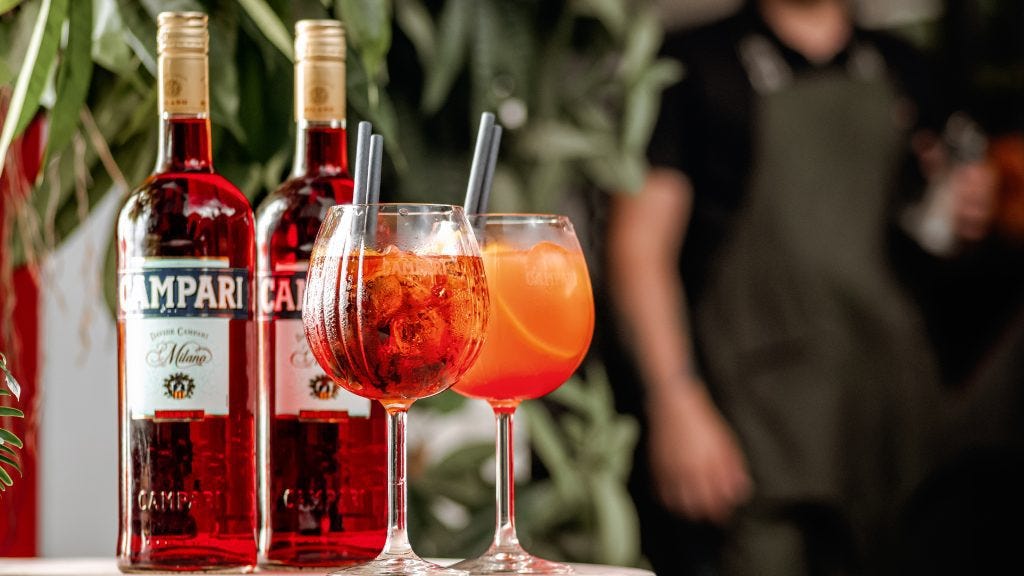
by Ross Kingsley | May 11, 2025 | LIQUORS: LIFT YOUR SPIRITS
Campari, with its unmistakable ruby red hue and bold, bittersweet flavor, is one of Italy’s most iconic aperitifs. Since its creation in 1860 by Gaspare Campari in Novara, Italy, it has become a symbol of the Italian aperitivo—an early evening tradition that celebrates conversation, small bites, and light drinks to prepare the palate for dinner. Campari’s recipe remains a closely guarded secret, but its flavor is known to derive from the infusion of aromatic herbs, spices, and fruits in alcohol and water.
Originally, Campari’s vibrant color came from cochineal, a natural dye made from insects, but today it’s achieved using modern food-grade coloring. Regardless of how the hue is produced, it remains a defining characteristic—striking, festive, and instantly recognizable.
But Campari isn’t just about looks. Its layered bitterness and citrus-forward profile make it one of the most versatile ingredients in the cocktail world. Equally at home in refined hotel bars and relaxed street-side cafés, it plays a central role in both classic and contemporary mixology.
The Aperitif of Choice
At its core, Campari is designed to stimulate the appetite. Bitterness is known to trigger the salivary glands and wake up the senses—exactly what an aperitif is meant to do. That’s why Campari-based drinks often appear at the start of an Italian meal or social gathering.
Its bold profile also allows it to harmonize with a range of ingredients, from botanical gins to sweet vermouths and sparkling wines. This makes Campari not only a staple for professionals behind the bar but also for home bartenders seeking to elevate their pre-dinner ritual.
Classic Campari Cocktails:
Negroni
The Negroni has earned legendary status in the cocktail world. Made with equal parts Campari, gin, and sweet vermouth, it’s a bold, balanced drink with a deep complexity. Served over ice and garnished with an orange slice or twist, it’s the definitive expression of bitter elegance.
Americano
Lighter than the Negroni but just as satisfying, the Americano mixes Campari with sweet vermouth and soda water. This effervescent, low-alcohol option is ideal for warm evenings or early aperitivo hours.
Boulevardier
For those who enjoy a richer, rounder profile, the Boulevardier swaps the gin in a Negroni for bourbon. The result is a warming, bittersweet drink that highlights Campari’s darker, spicier notes.
Campari Spritz
A sparkling, refreshing twist, the Campari Spritz blends Campari with prosecco and soda water. It’s a more assertive cousin to the lighter Aperol Spritz, offering a sophisticated edge while maintaining a festive feel.
Campari Orange
Among the simplest ways to enjoy Campari is in the Campari Orange. Also known in Italy as the Garibaldi, this cocktail features just two ingredients: Campari and freshly squeezed orange juice. The result is a vibrant, citrusy drink that balances the bitterness of Campari with the natural sweetness and acidity of orange juice.
Unmistakably Italian
Whether served neat, on the rocks, or as part of a cocktail, Campari remains a pillar of Italian drinking culture. Its distinctive flavor and arresting color have secured its place on menus across the world—from traditional cafés in Milan to rooftop bars in Manhattan. In every pour, there’s a touch of old-world charm and modern mixology.
_ _
© Churrasco PHUKET STEAKHOUSE / ALL RIGHTS RESERVED
Churrasco Phuket Steakhouse serves affordable Wagyu and Black Angus steaks and burgers. We are open daily from 12noon to 11pm at Jungceylon Shopping Center in Patong / Phuket.
We are family-friendly and offer free parking and WiFi for guests. See our menus, reserve your table, find our location, and check all reviews here:
https://Churrascophuket.com/
#Churrascophuket #jungceylon #phuketsteakhouse #affordablewagyu #wagyu




